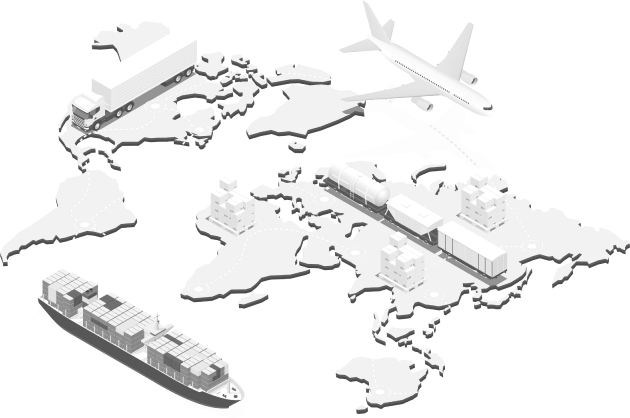When businesses procure products wholesale, they make precise arrangements to transport the goods to their facility or retail store, and get set for resale to customers, all the while eagerly awaiting profits to begin rolling in the door. It’s as simple as that – in theory.
Because the reality is, sometimes a critical supply chain breaks or is slowed by extreme fluctuations in worldwide cargo capacity that end up causing unexpected spikes in shipping prices. So now what’s the plan? Order more product to get ahead of any future delays or order less to stave off the sudden expenses?
“That’s exactly what’s happening right now, as a direct result of the pandemic and other disruptive forces,” says Omar Zambrano, the chief operating officer of Prime Group who oversees operations for subsidiary Prime Logistics. “There’s a terrifically serious shortage of needed shipping capacity, primarily from Asia but elsewhere across the globe, into the U.S. market. It’s a major issue.”
Worse yet, “prices are changing every week, and even by paying the highest rates, shippers still can’t often get solid confirmation of space,” he adds.
Even globally connected firms like Prime Logistics are struggling – not just to find available capacity for customers, but also to explain how in the world costs have risen up to 300% over the last six months.
Sticker Shock
According to Zambrano, as prices soared, many Prime Logistics’ importers said, at first, “I can’t pay that.” Eventually, they budged and bought shipping for just one container, and waited to see what would happen. “But they’re still waiting and it’s not getting any better!”
Stunned by the higher prices, many customers wrongly assumed this would be a temporary blip, not an all-out sustained and deepening situation. “Traditionally, our customers turn to us without question to do what we do best – move their product efficiently, reliably, and at the right price,” he says. “But now, we are also playing the role of a counselor, continually providing fair and accurate assessments of the current market conditions – and advising how to best to adapt.”
Prime Logistics has also been working side-by-side with customers to help prepare for the annual rush to get inventory onto shelves for the busy end-of-year retail season. “Compared with previous peak holiday periods, this year shipments must be booked up to eight weeks earlier than usual – which essentially means, today!”
So What Happened?
Zambrano notes that the primary reasons for the current global capacity problem are COVID and the new variants of the virus and, of course, the Suez Canal debacle.
He says the lack of back-up inventory caused by the first wave of COVID persists as retailers and wholesalers were never quite able to replenish their stock of product. They never really had chance to do so. “So with no inventory and limited ability move product quick enough to match the now-exploding increase in consumer demand, we are experiencing an unprecedented shortage of global shipping capacity.”
Then there was the Suez Canal crisis that exacerbated an already bad situation – when a massive ocean freighter ran aground this past March, blocking canal traffic for six days. More than 400 ships, laden with cargo, sat idle waiting to pass – as the world waited for delivery of the stranded goods.
So just when it would make sense to turn to air cargo to pick up the slack, many airlines had already begun reconverting their pax-freighters to pure passenger service. This, combined with the emergence of the Delta variant of the virus that resulted in a reduction of frequencies into certain key Asian markets, created sharp increases in rates in the air cargo segment, as capacity dropped.
Consequently, all of these factors conspired to lengthen the normal supply-chain flow. For shipments from Asia to the U.S. East Coast, for example, the norm is four to five weeks. Now, it is up to two months. But, says Zambrano, because Prime Logistics has strong relationships with both ocean carriers and air carriers worldwide, “we have, for the most part, succeeded in moving freight for our customers from Asia, even during this most difficult time.”
Now What?
On the home front in the U.S., supermarket shoppers accustomed to paying $.50 for a can of fruit, are now suddenly discovering that very same product has jumped to $3. Zambrano says that’s because it’s not just the cost of transporting a can of fruit, but the higher cost of the can itself and even the higher price of the wood that is used to build the shipping pallets.
“Every industry is being impacted by the lack of available capacity to move the commodities that support businesses and serve consumers worldwide,” he adds. Medical supplies as well are costing more. For example, Prime Logistics transports hundreds of shipping containers per month of medical supplies from Shanghai to U.S. Gulf ports. “Yes, even shipment of essential products and equipment is an uphill battle,” he added.
“This also comes as wholesalers and retailers here and worldwide are presently buying up product for the holidays,” Zambrano says. “It’s only going to get more challenging to find space in the last four months of the year, and there’s no simple solution, as so many products for every-day life come from across the globe – everything from tires and canned foods to electronics, machinery, medical supplies, and even fresh and frozen produce and seafood.”
Better Safe Than Sorry
This situation is highly problematic for U.S. retailers who normally rely on their ability to maintain ample inventory to keep pace with rising consumer demand. No easy task – as the U.S. Bureau of Economic Analysis recently reported consumer spending on durable goods through May 2021 was running 25 percent higher than pre-pandemic 2019, while the inventory-to-sales ratio continues to skim near record lows.
Because of the unabated growth of U.S. sales and major supply-chain disruptions, Zambrano reiterates that it is especially important that medium and small shippers secure cargo space now and store inventory to keep ahead of the capacity shortage. “Clearly, freight-rate shock is hitting them hardest.”
But at the end of the day, no entity anywhere across the globe is able to escape this space problem – including even the major retail and online stores. Due to their towering market strength and deep pockets, they’ve been able to charter cargo container vessels between Asia and the U.S. to mitigate their risk of being impacted by the capacity shortage. Meanwhile, many other retailers and wholesalers are taking a different route – planning way ahead.
“To ensure that sufficient inventory will be available, particularly for the holidays, we are working with our clients in every market niche to move up their shipments this year to secure needed shipping capacity,” he adds.
Perfect Storm
According to Ben Hackett, a consultant in of maritime strategy and trade logistics, clearly the strain of the continuing economic expansion is putting considerable pressure on the logistics supply chains supporting all industries worldwide,” “We’re seeing first hand the lack of shipping capacity combined with port congestion as vessels line up week after week to discharge goods from both Asia and Europe.”
He says delays are stretching to landside as port terminals struggle with space shortages, and labor challenges are affecting ports, railroads, and trucking companies alike. “This part of the recovery is not a pretty sight,” he adds.
Zambrano agrees. In fact, he describes what is presently happening in global logistics as “the perfect storm.”
Prime Logistics has substantial shipping industry contacts and relationships to help customers through the tough times, but the path isn’t easy. “We are finding solutions for our customers – albeit, right priced under these converging conditions.”
“My best guess is that recovery may start in 2024 with global shipping returning to some sense of stability,” he stresses, but adds that the worldwide problem is likely going to get worse before it gets better in 2021: “This is the most difficult period ever for the global logistics industry.”
Additional Readings:
Prime Group Aligns with Big Names in the Business
Prime Logistics is Suited Up to Support Cold-Chain Distribution of Vaccines
Growing Presence of E-Commerce Making Holidays Even Happier This Year



